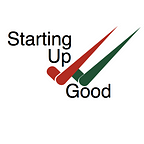Investing for Health Equity Impact
SXSW Conference Health Track Session Summary
This article is part of an extended series summarizing discussions at recent healthcare conferences about improving health equity through technology. This session summary contains details on the SXSW Conference Health Track. You can read our conference overview and find links to all articles here.
Learn more about StartingUpGood’s Health + Equity + Tech Project.
Investing for Health Equity Impact
Description
Racism is a public health crisis. From maternal health to oral health, Black, Indigenous and other people of color (BIPOC) experience worse health outcomes than their white counterparts. Yet models that successfully engage these communities in solutions to address inequity are rare. This presentation will share best practices and make the case for scalable investments in community-driven health solutions by and for communities of color, providing a sustainable path forward to transforming our health care system to work better for everyone.
Speaker
Myechia Minter-Jordan, CareQuest Institute for Oral Health
Key Points
Minter-Jordan addresses several myths surrounding health equity and provides practical advice on ways that practitioners can overcome these myths.
Myth 1 — Any investment in underserved communities is a “good” investment.
Before creating a “do-good” program, make sure you do the research to understand your implicit biases. Research must include actually talking to the people in the community who you are trying to help to truly understand their real needs.
Myth 2 — The Medicaid population isn’t a viable market.
People often think that the challenges are too deep and resources are too few in historically underserved communities. But the reality is that buying power in communities of color has exploded in recent years, and there’s growing healthcare enrollment for low-income people. These trends are likely to continue as more states adopt Medicaid expansion policies.
Myth 3 — These investments aren’t sustainable or scalable.
Chronically underserved communities are often the best places to start, especially in healthcare.
Myth 4 — Government regulations kill opportunity.
Yes, healthcare is a highly regulated market and the government moves slowly and resists change. However, that pandemic has paved the way for quicker adoption of technology out of necessity, and this opportunity for innovation is likely to continue.
Myth 5 — Products geared towards underserved communities are less likely to have mass appeal.
CareQuest supports oral health companies whose aesthetically beautiful products appeal to high-end consumers AND are accessible to the Medicaid community.
As Minter-Jordan concludes: “the opportunities are there — will you seize them before someone else does?”
You can read a summary of all our 2022 healthcare conference coverage here, or check out specific coverage of each conference:
StartingUpGood supports fresh entrepreneurial approaches to doing good in the world. Check us out on Twitter: StartingUpGood
Explore | Experiment | Improve
